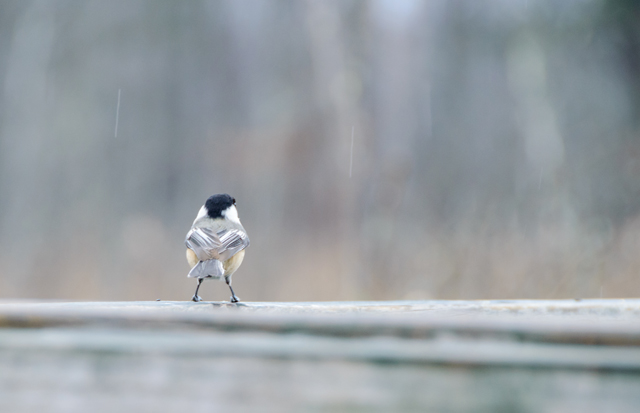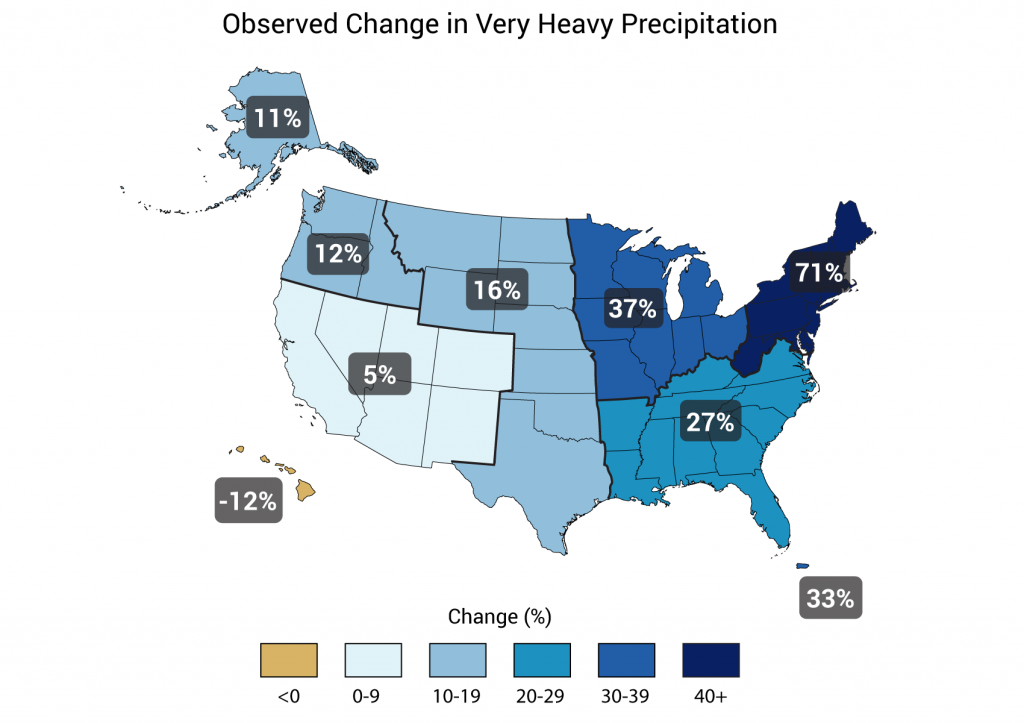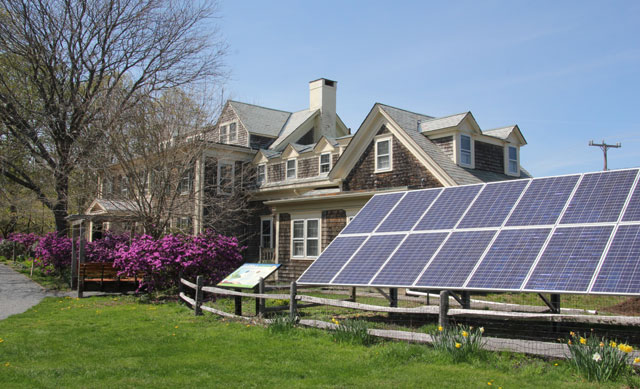Eastern Massachusetts has been getting a serious dose of rain.

© Alison Borrelli
On July 12, Hanscom Air Force Base in Bedford, recorded about an inch of rain in a mere 7 minutes, and 2.44″ in 35 minutes. The average total precipitation for July is usually around 2.5 inches.
For Bedford, the 200-year storm is 2.33 inches in 30 minutes. (A 200-year storm is a storm so big it only has a 0.5% chance of occurring in a given year.) But, we may see more of them in the future.
Very heavy precipitation events like this are becoming more severe and more frequent, especially in the Northeast. From 1958 through 2012, the amount of precipitation falling in the heaviest 1% of precipitation events increased by 71% in the Northeast.
It may be counter intuitive, but as our climate becomes warmer, we face a greater risk from stronger storms. With more heat, we have more evaporation and more energy to carry the moisture aloft where it can power big thunderstorms.
So, it’s not our imagination.
We are seeing more heavy downpours than in the past, and that trend is likely to continue into the future. That could have serious implications for how we prepare for storms.
The infrastructure we have in place to deal with all that stormwater is based on the general idea that the sizes of storms we see over time doesn’t change. Climate change has blown up that idea.
We may see 200-year storms roll around every 50 years or so, and our infrastructure will need to handle multiple storms larger than it’s currently designed to manage. But simply replacing infrastructure with newer versions designed for larger storms may also become obsolete in the future as the climate continues to change.
We need to prepare for things to keep changing. We need to be dynamic and adaptable.
That’s a difficult challenge to solve, but one the best ways to make the landscape as resilient and flexible as possible is to preserve open space and let nature take care of itself. Low-impact Development (LID) is one green infrastructure approach to do just do that.
Green infrastructure can also help deal with droughts like the one we went through last year. Natural spaces not only soak up excess water, but also allow water to makes its way back into the ground. That keeps streams and waterways in a healthy balance for both habitat and drinking water supplies.
Encourage your own community to follow LID practices and prepare for a constantly changing future. Learn more >



